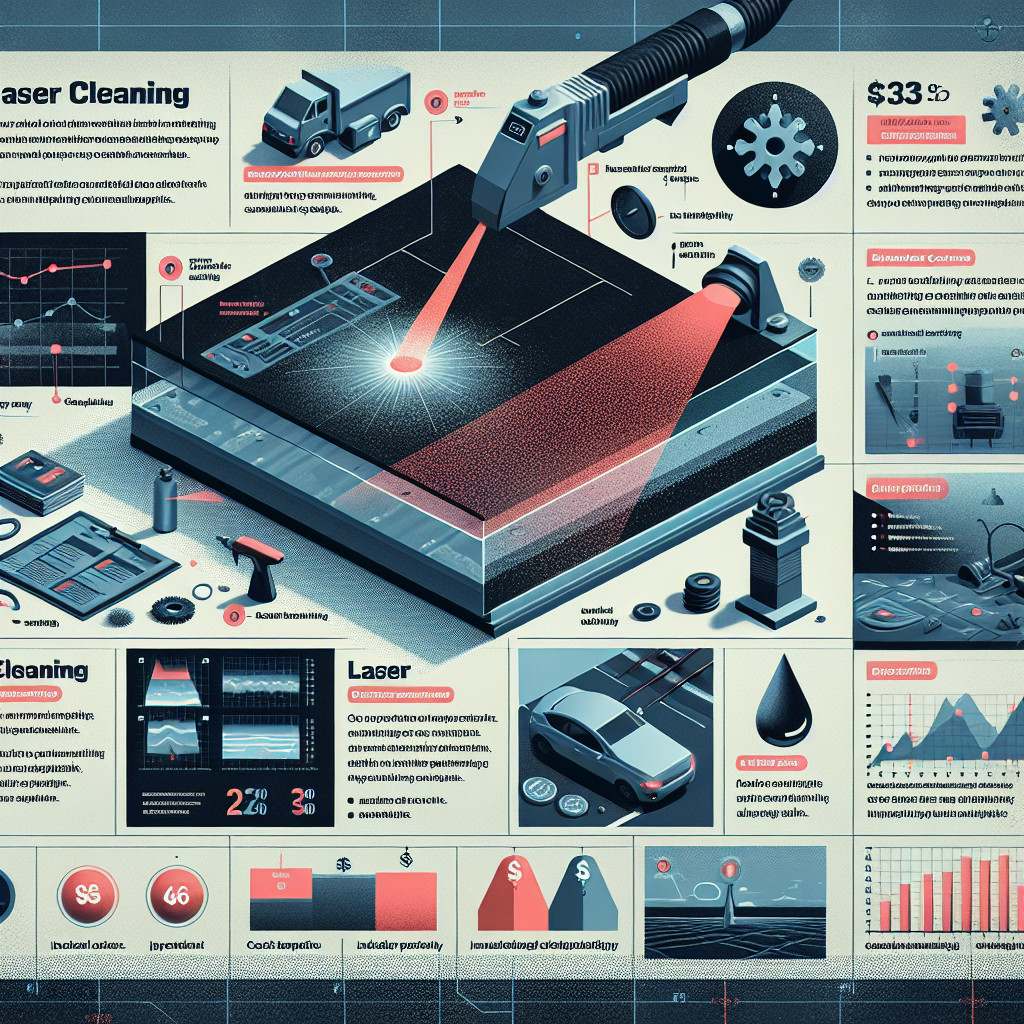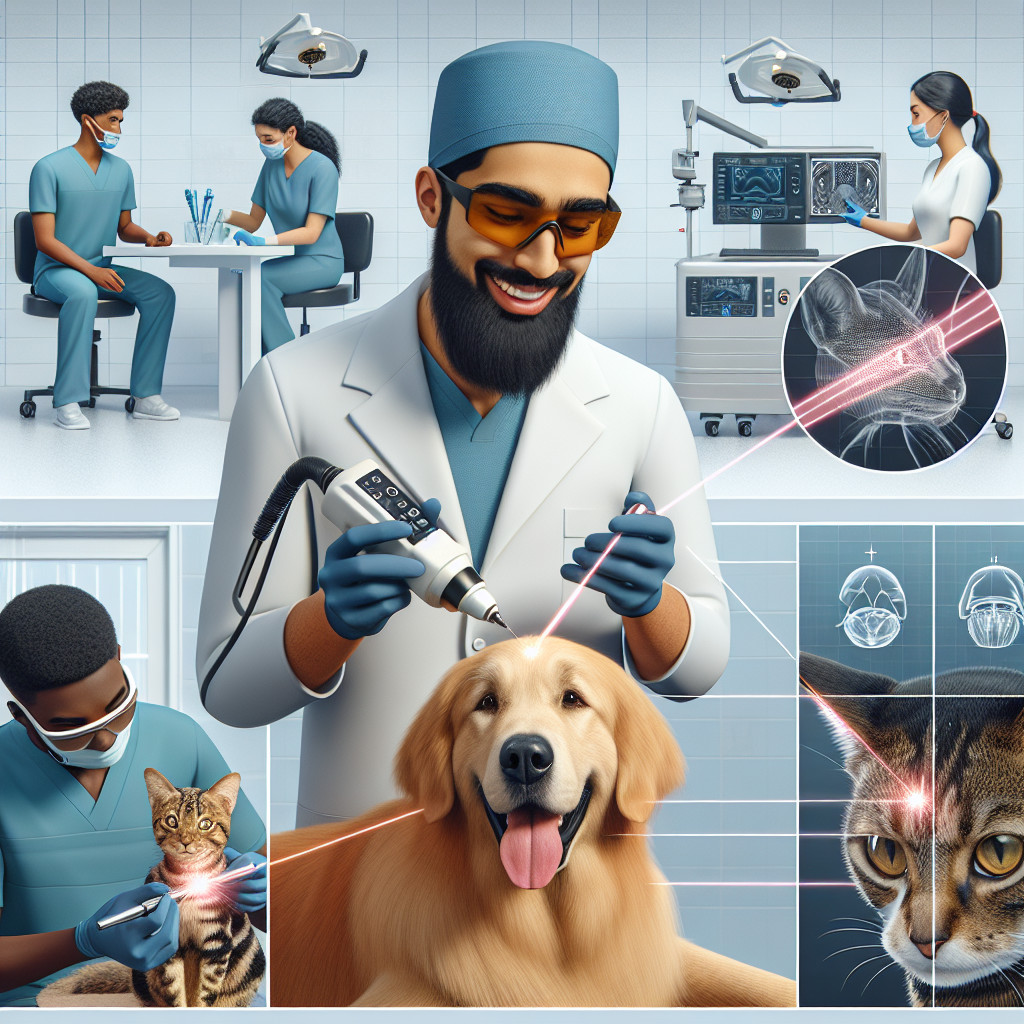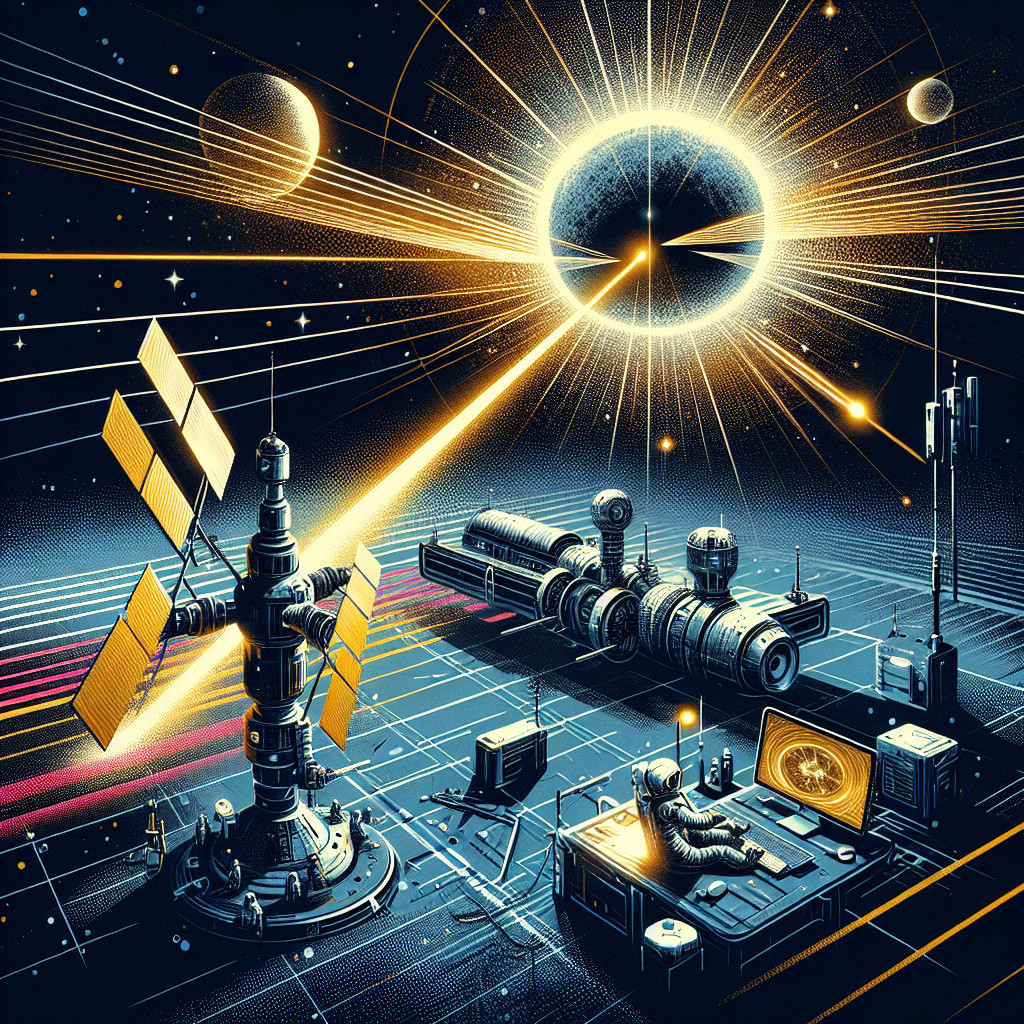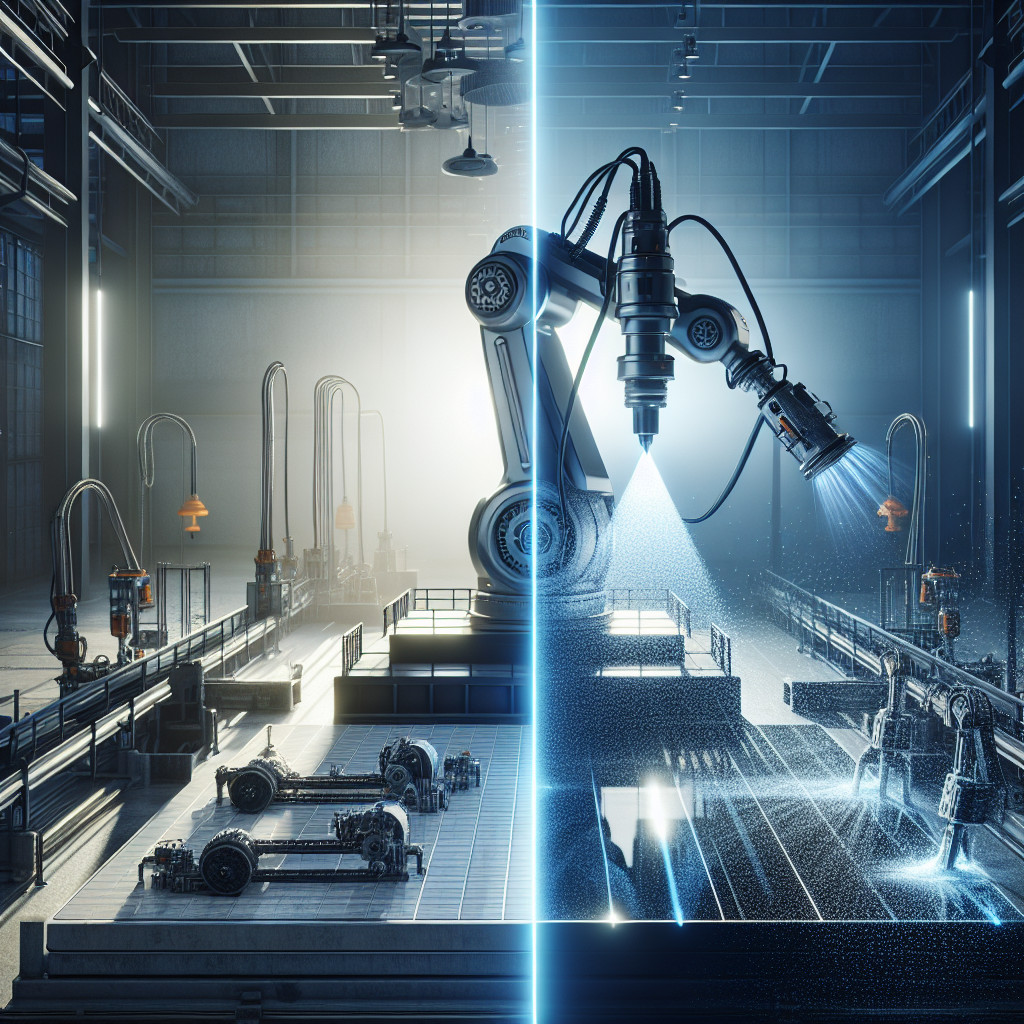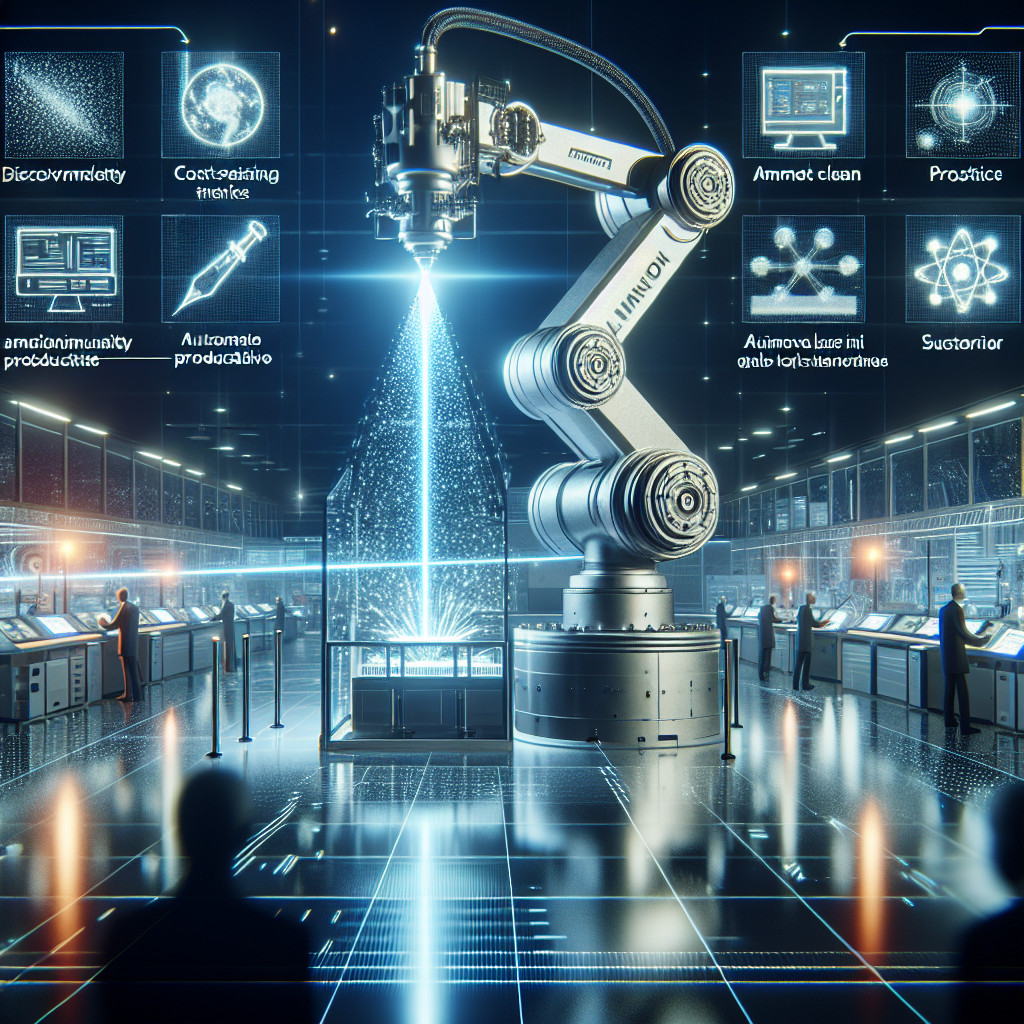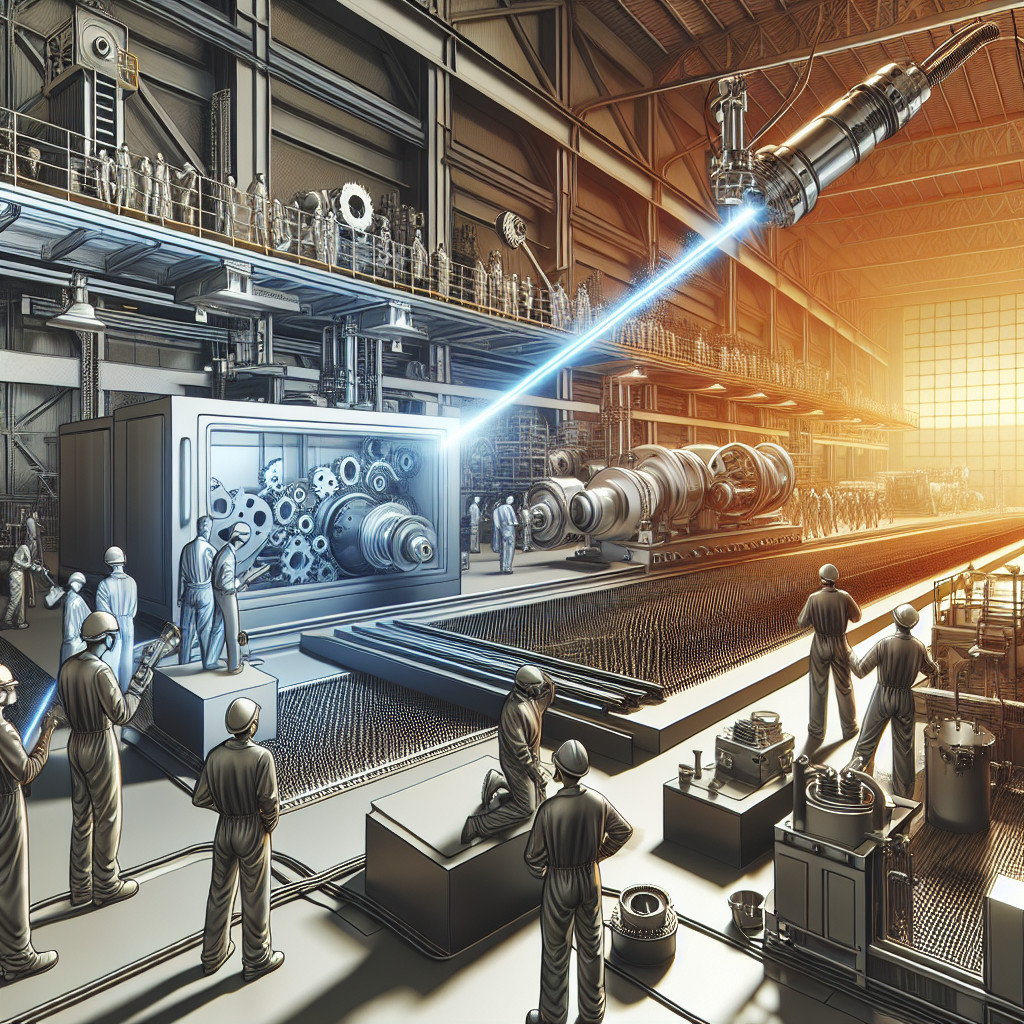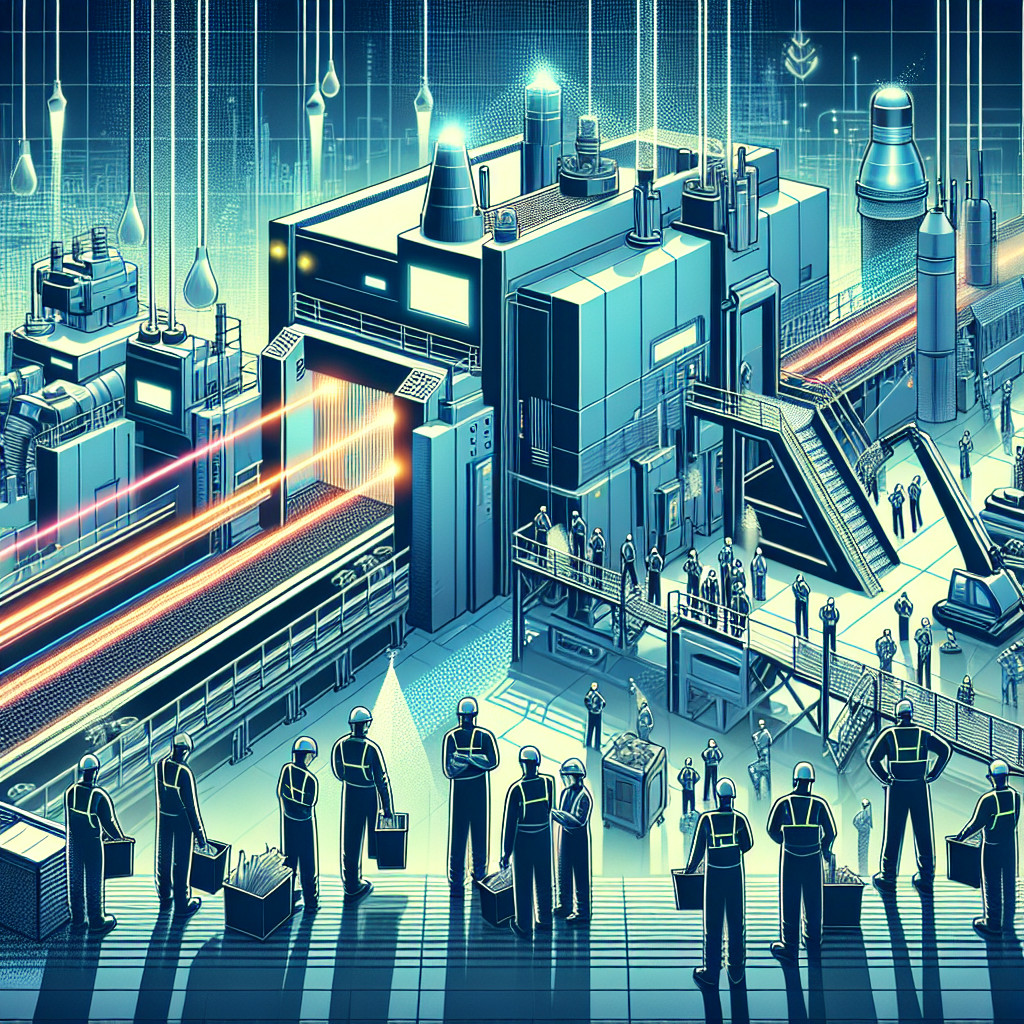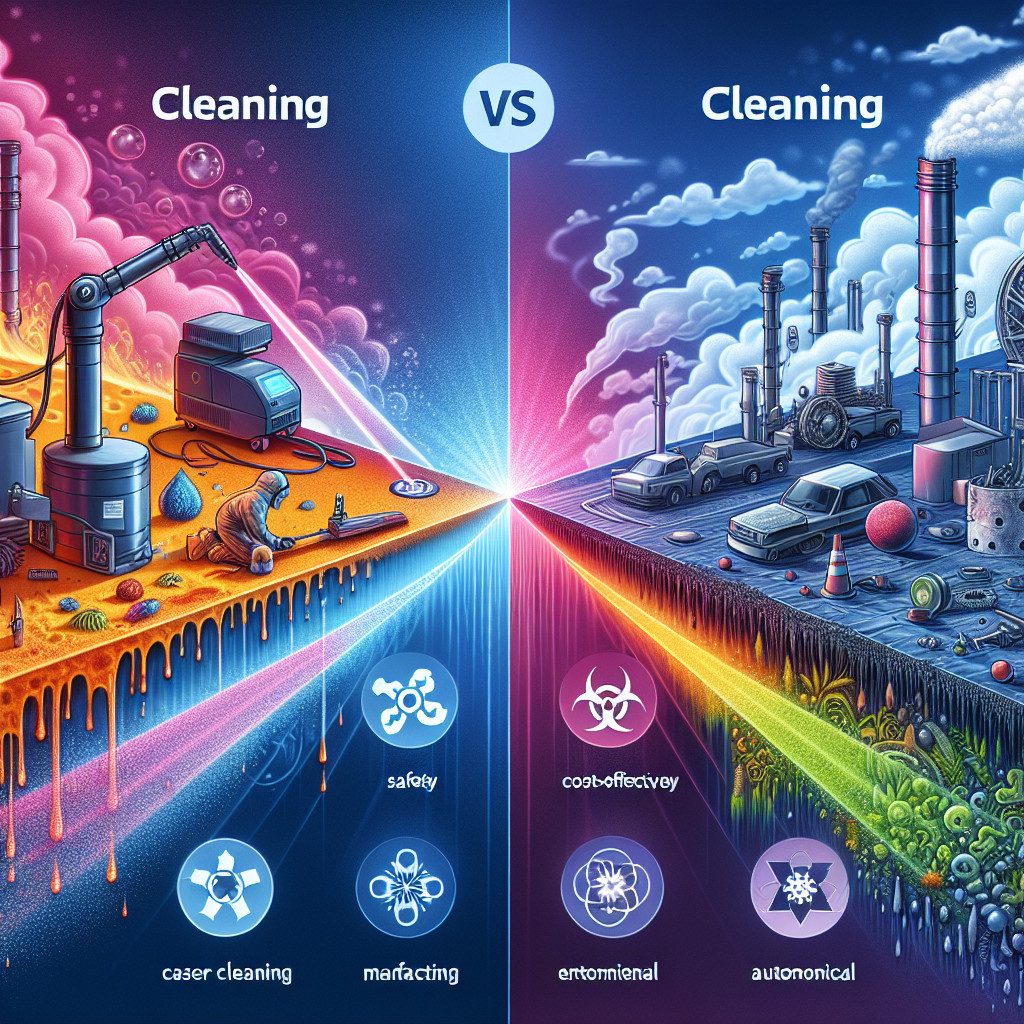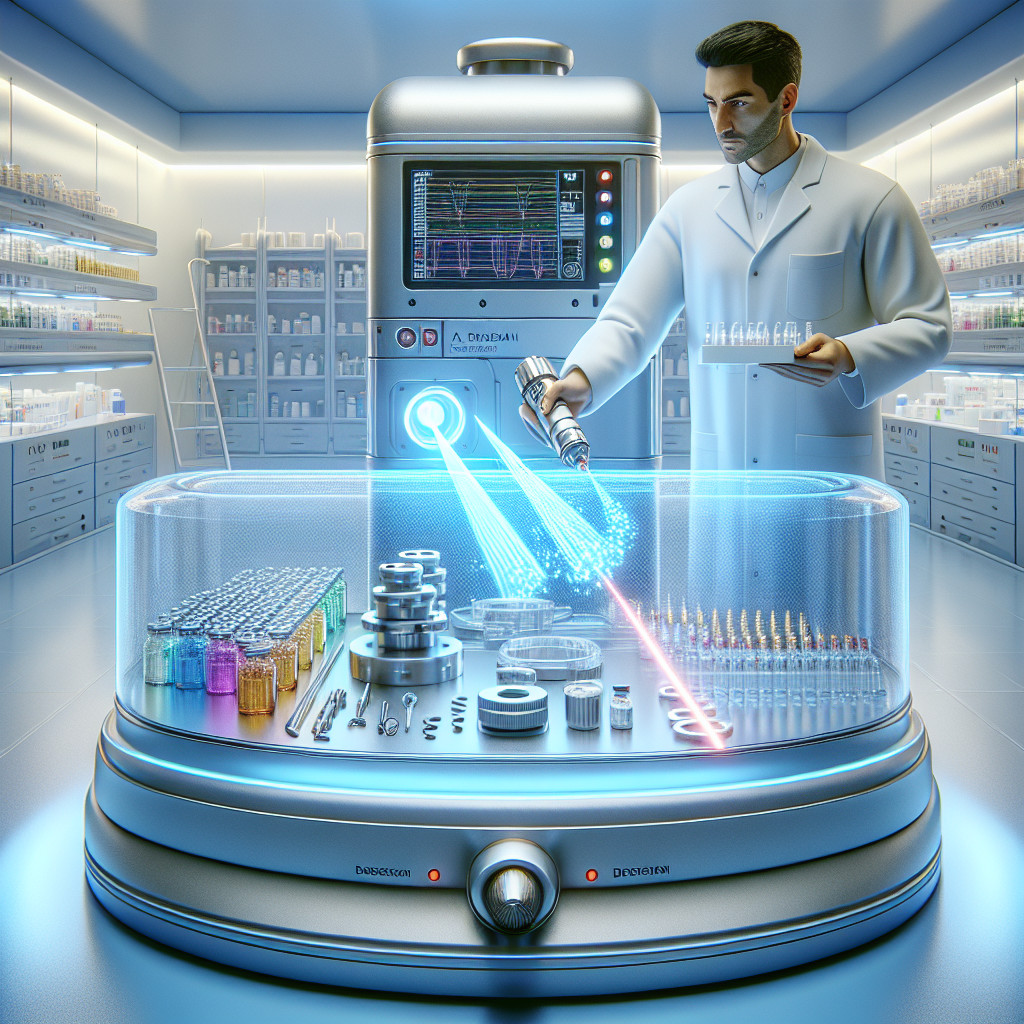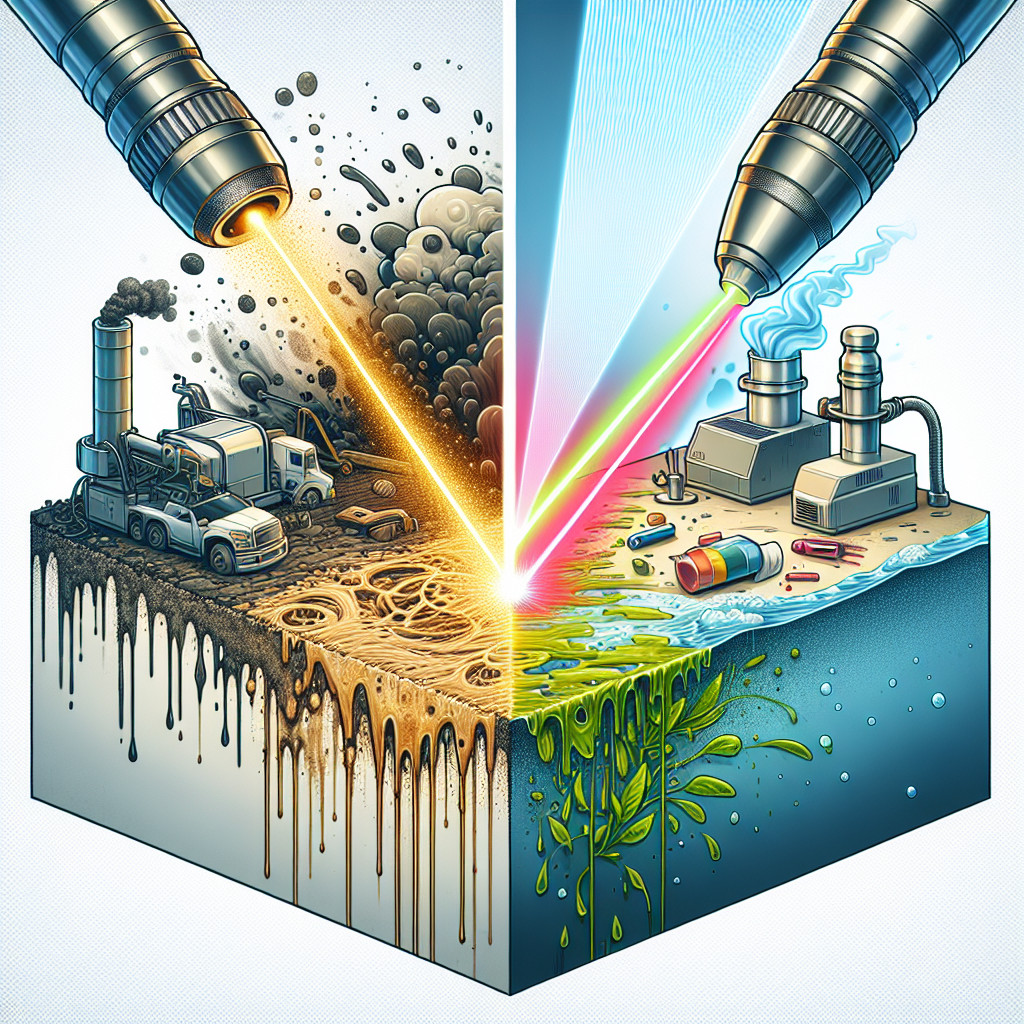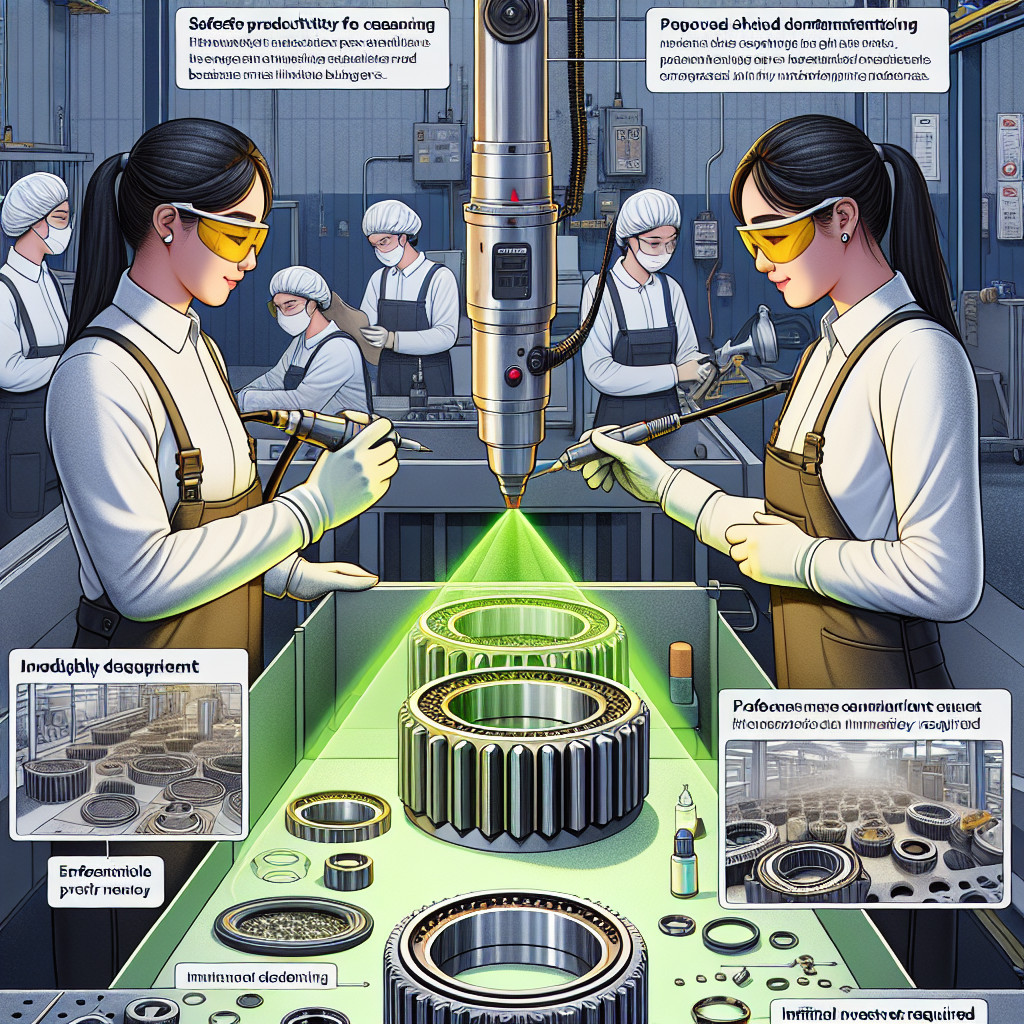- Introduction to laser cleaning and its applications in waste reduction
- The environmental benefits of laser cleaning compared to traditional cleaning methods
- Case studies on the use of laser cleaning in waste reduction in different industries
- The challenges and limitations of implementing laser cleaning technology for waste reduction
- The impact of laser cleaning on reducing the use of harmful chemicals in cleaning processes
- Laser cleaning and its potential in reducing waste in the aerospace industry
- The impact of laser cleaning on reducing waste in the construction sector
- The impact of laser cleaning on reducing waste in the shipbuilding industry
Introduction to laser cleaning and its applications in waste reduction
Czyszczenie laserowe to innowacyjna metoda usuwania zanieczyszczeń, osadów i powłok z różnych powierzchni. Wykorzystuje ona skoncentrowane wiązki światła laserowego o wysokiej energii, które skutecznie usuwają niepożądane substancje bez konieczności użycia chemikaliów lub mechanicznych narzędzi. Ta zaawansowana technologia znalazła szerokie zastosowanie w różnych dziedzinach, w tym w przemyśle, medycynie, konserwacji zabytków i ochronie środowiska.
Jednym z głównych obszarów zastosowania czyszczenia laserowego jest redukcja odpadów. Tradycyjne metody czyszczenia, takie jak piaskowanie, chemiczne rozpuszczanie lub mechaniczne szorowanie, generują duże ilości odpadów, które często są trudne do utylizacji. Czyszczenie laserowe minimalizuje ilość generowanych odpadów, ponieważ nie wymaga użycia żadnych substancji chemicznych ani materiałów pomocniczych. Proces ten jest również bardziej precyzyjny i kontrolowany, co pozwala na skuteczne usuwanie zanieczyszczeń bez uszkadzania podłoża.
W przemyśle, czyszczenie laserowe jest szeroko stosowane do usuwania farb, powłok ochronnych, rdzy i innych zanieczyszczeń z powierzchni metalowych. Tradycyjne metody usuwania farb, takie jak szlifowanie lub zastosowanie rozpuszczalników, generują duże ilości odpadów i mogą być szkodliwe dla środowiska. Czyszczenie laserowe eliminuje te problemy, umożliwiając skuteczne usuwanie farb bez generowania odpadów i bezpiecznie dla pracowników.
W medycynie, czyszczenie laserowe jest wykorzystywane do usuwania osadów i zanieczyszczeń z narzędzi chirurgicznych, endoskopów i innych urządzeń medycznych. Ta metoda zapewnia skuteczne i bezpieczne czyszczenie, eliminując ryzyko zakażeń i zapewniając wysoką jakość dezynfekcji. Ponadto, czyszczenie laserowe jest również stosowane w produkcji implantów medycznych, gdzie precyzyjne i bezpieczne czyszczenie jest niezbędne.
W dziedzinie konserwacji zabytków, czyszczenie laserowe jest nieocenione. Tradycyjne metody czyszczenia, takie jak szorowanie lub użycie chemikaliów, mogą uszkodzić delikatne powierzchnie zabytkowych obiektów. Czyszczenie laserowe pozwala na precyzyjne usuwanie zanieczyszczeń, osadów i powłok bez uszkadzania oryginalnej struktury. Ta metoda jest szczególnie skuteczna w przypadku czyszczenia kamienia, drewna i innych materiałów, które są podatne na uszkodzenia mechaniczne.
Oprócz wymienionych dziedzin, czyszczenie laserowe znajduje zastosowanie w wielu innych obszarach, takich jak przemysł elektroniczny, produkcja optyczna, przemysł spożywczy i wiele innych. Ta technologia jest nie tylko skuteczna i precyzyjna, ale także przyjazna dla środowiska, ponieważ minimalizuje generację odpadów i nie wymaga użycia szkodliwych substancji chemicznych.
Wnioski:
Czyszczenie laserowe to innowacyjna metoda usuwania zanieczyszczeń, osadów i powłok z różnych powierzchni. Znajduje ono szerokie zastosowanie w przemyśle, medycynie, konserwacji zabytków i wielu innych dziedzinach. Jednym z głównych obszarów zastosowania jest redukcja odpadów, ponieważ minimalizuje generację odpadów i nie wymaga użycia substancji chemicznych. Czyszczenie laserowe jest również bardziej precyzyjne i kontrolowane, co pozwala na skuteczne usuwanie zanieczyszczeń bez uszkadzania podłoża. Ta zaawansowana technologia przyczynia się do ochrony środowiska i poprawy efektywności procesów czyszczenia.
Słowa kluczowe: czyszczenie laserowe, redukcja odpadów, przemysł, medycyna, konserwacja zabytków, precyzja, kontrola, skuteczność, środowisko.
Frazy kluczowe: czyszczenie laserowe w przemyśle, czyszczenie laserowe w medycynie, czyszczenie laserowe w konserwacji zabytków, zalety czyszczenia laserowego, zastosowanie czyszczenia laserowego w redukcji odpadów.
The environmental benefits of laser cleaning compared to traditional cleaning methods
Another environmental benefit of laser cleaning is its minimal water consumption. Traditional cleaning methods often require large amounts of water to rinse away dirt and cleaning solutions. This excessive water consumption can strain local water supplies, especially in areas experiencing water scarcity. Laser cleaning, however, uses a dry process that requires little to no water. The laser beam vaporizes the contaminants, leaving behind a clean surface without the need for water rinsing. This significantly reduces water consumption and helps conserve this precious resource.
Furthermore, laser cleaning generates minimal waste compared to traditional cleaning methods. Traditional cleaning methods often produce a significant amount of waste, including used cleaning solutions, disposable wipes, and other materials. These waste materials often end up in landfills, contributing to the growing problem of waste management. Laser cleaning, on the other hand, produces minimal waste as it does not require the use of disposable materials or generate by-products. The only waste generated is the removed contaminants, which can often be collected and disposed of in an environmentally friendly manner.
In addition to these environmental benefits, laser cleaning also offers several other advantages. It is a non-abrasive cleaning method, meaning it does not damage the surface being cleaned. This extends the lifespan of the cleaned objects, reducing the need for frequent replacements and ultimately reducing waste. Laser cleaning is also a precise and efficient method, allowing for targeted cleaning without affecting surrounding areas. This precision reduces the amount of energy and resources required for cleaning, further minimizing its environmental impact.
In conclusion, laser cleaning offers numerous environmental benefits compared to traditional cleaning methods. Its ability to eliminate the need for harsh chemicals, minimal water consumption, and generation of minimal waste make it a more sustainable and eco-friendly cleaning option. Additionally, its non-abrasive nature and precision contribute to the reduction of waste and energy consumption. As we strive to protect the environment and reduce our ecological footprint, laser cleaning presents itself as a viable solution for a cleaner and greener future.
Keywords: laser cleaning, traditional cleaning methods, environmental benefits, chemicals, water consumption, waste generation, non-abrasive, precision, sustainability.
Long-tail phrases:
– The advantages of laser cleaning over traditional cleaning methods for the environment.
– How laser cleaning reduces the use of chemicals and its impact on the environment.
– The role of laser cleaning in conserving water resources.
– Minimizing waste generation through laser cleaning.
– The environmental implications of traditional cleaning methods.
– The precision and efficiency of laser cleaning in reducing energy consumption.
– The long-term benefits of laser cleaning for a sustainable future.
Case studies on the use of laser cleaning in waste reduction in different industries
The automotive industry generates a substantial amount of waste through the cleaning and maintenance of vehicle parts. Traditional methods such as chemical cleaning often result in the production of hazardous waste. However, laser cleaning has proven to be an effective alternative. Case studies have shown that laser cleaning can remove paint, rust, and other contaminants from car parts without generating any waste. This not only reduces the environmental impact but also improves the efficiency of the cleaning process.
2. Aerospace Industry:
The aerospace industry faces similar challenges in waste reduction, particularly in the maintenance and repair of aircraft components. Laser cleaning has been successfully implemented in this industry to remove coatings, adhesives, and other contaminants from various surfaces. By using laser cleaning, aerospace companies have significantly reduced the generation of hazardous waste and improved the overall sustainability of their operations.
3. Electronics Industry:
The electronics industry is known for its high production volumes and the generation of electronic waste. Laser cleaning has emerged as a promising solution to reduce waste in this industry. Case studies have demonstrated that laser cleaning can effectively remove soldering residues, adhesives, and other contaminants from electronic components without causing any damage. This not only reduces waste but also improves the quality and reliability of the final products.
4. Manufacturing Industry:
The manufacturing industry encompasses a wide range of sectors, each with its unique waste reduction challenges. Laser cleaning has been successfully applied in various manufacturing processes, including metal fabrication, plastic molding, and glass production. By using laser cleaning, manufacturers can eliminate the need for chemical cleaning agents and reduce the generation of hazardous waste. This not only improves the environmental footprint but also enhances the safety and health of workers.
5. Cultural Heritage Conservation:
Preserving cultural heritage objects often involves delicate cleaning processes to remove dirt, pollutants, and other contaminants without causing any damage. Laser cleaning has emerged as a valuable tool in the conservation of artworks, historical artifacts, and architectural structures. Case studies have shown that laser cleaning can effectively remove dirt and grime from delicate surfaces without altering the original material. This reduces the need for harsh chemicals and abrasive cleaning methods, thereby minimizing waste generation and preserving the integrity of cultural heritage objects.
Keywords: laser cleaning, waste reduction, industries, automotive, aerospace, electronics, manufacturing, cultural heritage conservation.
Long-tail phrases:
– Laser cleaning as a sustainable waste reduction solution in the automotive industry.
– Waste reduction through laser cleaning in the aerospace sector.
– The role of laser cleaning in reducing waste in the electronics industry.
– Laser cleaning: a sustainable approach to waste reduction in manufacturing processes.
– Preserving cultural heritage through laser cleaning: a case study.
The challenges and limitations of implementing laser cleaning technology for waste reduction
1. Cost: One of the primary challenges of implementing laser cleaning technology is its high cost. Laser cleaning systems are expensive to purchase and maintain, making it difficult for small and medium-sized enterprises to adopt this technology. The initial investment required for laser cleaning equipment, along with the ongoing maintenance costs, can be a significant barrier for many businesses.
2. Limited applicability: Laser cleaning technology is not suitable for all types of waste. It is most effective for removing contaminants from solid surfaces such as metals, ceramics, and plastics. However, it may not be as effective for cleaning organic materials or delicate surfaces. This limited applicability restricts the potential use of laser cleaning technology in certain industries.
3. Safety concerns: Laser cleaning involves the use of high-powered lasers, which can pose safety risks if not handled properly. The intense heat generated by the laser can cause burns or eye injuries if proper safety measures are not in place. Additionally, the use of lasers may require specialized training and certification, adding to the overall cost and complexity of implementing this technology.
4. Energy consumption: Laser cleaning technology requires a significant amount of energy to operate. The high-power lasers used in the cleaning process consume a substantial amount of electricity, contributing to the overall carbon footprint. This energy consumption can be a limitation, especially in regions where renewable energy sources are not readily available.
Limitations:
1. Surface limitations: Laser cleaning technology may not be suitable for all types of surfaces. Certain materials may absorb or reflect laser energy, making it difficult to achieve effective cleaning. Additionally, the effectiveness of laser cleaning can be influenced by factors such as surface roughness, color, and composition, further limiting its applicability.
2. Speed limitations: Laser cleaning can be a time-consuming process, especially when dealing with large or complex surfaces. The speed at which contaminants can be removed depends on various factors, including the laser power, scanning speed, and the type of material being cleaned. This limitation can impact the efficiency and cost-effectiveness of laser cleaning technology.
3. Environmental considerations: While laser cleaning technology offers a potential solution for waste reduction, it is essential to consider the environmental impact of this technology itself. The production and disposal of laser cleaning equipment can contribute to waste and pollution. Additionally, the chemicals used in the cleaning process may have environmental implications if not properly managed.
Keywords: laser cleaning technology, waste reduction, challenges, limitations, cost, applicability, safety concerns, energy consumption, surface limitations, speed limitations, environmental considerations.
Long-tail phrases:
1. The cost implications of implementing laser cleaning technology for waste reduction.
2. The challenges of applying laser cleaning technology in industries with organic waste.
3. Safety measures and training requirements for laser cleaning technology implementation.
4. The environmental impact of laser cleaning technology and its sustainability.
5. Overcoming the limitations of laser cleaning technology for effective waste reduction.
The impact of laser cleaning on reducing the use of harmful chemicals in cleaning processes
Benefits of laser cleaning:
1. Elimination of harmful chemicals: Laser cleaning eliminates the need for toxic and hazardous chemicals, reducing the risk of exposure to workers and the environment. This significantly improves workplace safety and reduces the potential for chemical-related accidents.
2. Environmental sustainability: By eliminating the use of harmful chemicals, laser cleaning contributes to a cleaner and greener environment. It reduces the release of volatile organic compounds (VOCs) and other pollutants into the air, water, and soil, minimizing the ecological footprint of cleaning processes.
3. Cost-effectiveness: Although the initial investment in laser cleaning equipment may be higher compared to traditional cleaning methods, the long-term cost savings are significant. Laser cleaning eliminates the need for purchasing, storing, and disposing of chemical solvents, reducing operational costs and waste management expenses.
4. Versatility: Laser cleaning can be applied to a wide range of materials, including metals, plastics, ceramics, and composites. It is effective in removing various contaminants, such as rust, paint, oil, grease, and oxides, from different surfaces. This versatility makes laser cleaning suitable for diverse industries and applications.
5. Preservation of surface integrity: Unlike abrasive cleaning methods, laser cleaning does not damage the underlying surface. It selectively removes contaminants without altering the material properties, ensuring the integrity and quality of the cleaned surface. This is particularly important in industries where surface finish and precision are critical, such as aerospace and electronics.
Challenges and limitations:
While laser cleaning offers numerous benefits, it also has some challenges and limitations that need to be considered:
1. Limited effectiveness on certain contaminants: Laser cleaning may not be as effective in removing certain contaminants, such as heavy grease or deeply embedded residues. In such cases, a combination of laser cleaning with other cleaning methods may be required.
2. Safety considerations: Although laser cleaning eliminates the need for harmful chemicals, it still requires proper safety precautions. Laser beams can cause eye and skin injuries if not used correctly. Adequate training and protective measures are necessary to ensure the safe operation of laser cleaning equipment.
3. Initial investment: The initial cost of laser cleaning equipment can be higher compared to traditional cleaning methods. However, the long-term cost savings and environmental benefits outweigh the initial investment.
Conclusion:
Laser cleaning is a promising technology that has the potential to revolutionize the cleaning industry by reducing the use of harmful chemicals. Its numerous benefits, including the elimination of toxic substances, environmental sustainability, cost-effectiveness, versatility, and preservation of surface integrity, make it an attractive alternative to traditional cleaning methods. While there are some challenges and limitations, ongoing research and technological advancements are expected to overcome these obstacles. As industries strive for more sustainable and environmentally friendly practices, laser cleaning is likely to play a significant role in reducing the use of harmful chemicals in cleaning processes.
Keywords: laser cleaning, harmful chemicals, cleaning processes, environmental impact, workplace safety, cost-effectiveness, surface integrity, versatility, challenges, limitations.
Long-tail phrases:
1. The impact of laser cleaning on reducing the use of harmful chemicals in industrial cleaning processes.
2. Laser cleaning as an environmentally friendly alternative to chemical-based cleaning methods.
3. The benefits and challenges of implementing laser cleaning technology in various industries.
4. How laser cleaning contributes to a cleaner and greener environment.
5. The cost-effectiveness and long-term savings of laser cleaning compared to traditional cleaning methods.
Laser cleaning and its potential in reducing waste in the aerospace industry
Laser cleaning is a non-contact, non-abrasive method of removing contaminants from surfaces using laser beams. It involves the use of high-intensity laser pulses to vaporize or ablate the unwanted material, leaving behind a clean surface. Laser cleaning is highly precise and can be used on a variety of materials, including metals, composites, and ceramics.
Applications of laser cleaning in the aerospace industry:
1. Paint and coating removal: The aerospace industry often requires the removal of old paint and coatings from aircraft surfaces. Laser cleaning offers a clean and efficient method of stripping away these layers without damaging the underlying material. This reduces the need for chemical strippers and abrasive techniques, thereby minimizing waste generation.
2. Surface preparation: Laser cleaning can be used to prepare surfaces for bonding, welding, or painting. By removing contaminants such as grease, oil, and oxides, laser cleaning ensures better adhesion and improves the overall quality of the finished product. This eliminates the need for harsh chemical cleaners and reduces waste in the form of cleaning agents.
3. Maintenance and repair: Laser cleaning can also be used for maintenance and repair operations in the aerospace industry. It can remove corrosion, rust, and other surface defects without causing any damage to the underlying material. This extends the lifespan of components and reduces the need for replacements, thereby reducing waste.
Benefits of laser cleaning in waste reduction:
1. Environmental impact: Laser cleaning eliminates the need for hazardous chemicals and abrasive materials, which are commonly used in traditional cleaning methods. This significantly reduces the environmental impact of waste generated during the cleaning process.
2. Cost savings: Laser cleaning is a highly efficient and precise method, which reduces the time and labor required for cleaning operations. This leads to cost savings for aerospace companies, as they can allocate resources more effectively and reduce waste-related expenses.
3. Improved safety: Laser cleaning eliminates the need for manual labor and reduces the risk of injuries associated with traditional cleaning methods. This improves workplace safety and reduces the number of accidents, further contributing to waste reduction.
Conclusion:
Laser cleaning has immense potential in reducing waste in the aerospace industry. Its applications in paint and coating removal, surface preparation, and maintenance operations can significantly minimize waste generation and improve overall efficiency. By adopting laser cleaning technology, aerospace companies can not only reduce their environmental footprint but also achieve cost savings and enhance workplace safety.
Keywords: laser cleaning, waste reduction, aerospace industry, paint removal, surface preparation, maintenance, environmental impact, cost savings, workplace safety.
Long-tail phrases: laser cleaning in the aerospace industry, reducing waste in aerospace, laser cleaning applications, laser cleaning benefits, laser cleaning technology, waste reduction in aerospace, laser cleaning for paint removal, laser cleaning for surface preparation, laser cleaning for maintenance operations.
The impact of laser cleaning on reducing waste in the construction sector
Laser cleaning is a non-contact, non-abrasive method of removing contaminants from surfaces. It utilizes high-intensity laser beams to vaporize or ablate the unwanted material, leaving behind a clean surface. This technology has gained popularity in various industries, including automotive, aerospace, and now, the construction sector. Laser cleaning offers several advantages over traditional cleaning methods, such as reduced waste generation, increased efficiency, and improved safety.
Reducing waste in construction:
The construction sector is notorious for generating large amounts of waste, including debris, dust, and hazardous materials. Traditional cleaning methods often involve the use of chemicals, solvents, and abrasive materials, which contribute to this waste generation. Laser cleaning, on the other hand, eliminates the need for such materials, significantly reducing waste production. The laser beam precisely targets the contaminants, leaving behind a clean surface without generating any additional waste.
Benefits of laser cleaning in construction:
1. Waste reduction: Laser cleaning eliminates the need for chemicals and abrasive materials, reducing waste generation in the construction sector. This not only benefits the environment but also reduces disposal costs for construction companies.
2. Increased efficiency: Laser cleaning is a highly efficient method that can remove contaminants from surfaces quickly and effectively. This saves time and labor, allowing construction projects to be completed more efficiently.
3. Improved safety: Traditional cleaning methods often involve the use of hazardous chemicals and materials, posing risks to workers’ health and safety. Laser cleaning eliminates these risks, providing a safer working environment for construction workers.
4. Preservation of surfaces: Laser cleaning is a gentle method that does not damage the underlying surface. This allows for the preservation of delicate materials, such as historical buildings or artifacts, which would otherwise be at risk of damage from abrasive cleaning methods.
5. Versatility: Laser cleaning can be used on various surfaces, including concrete, metal, wood, and stone. This versatility makes it suitable for a wide range of construction applications, from cleaning building facades to removing graffiti.
Keywords: laser cleaning, waste reduction, construction sector, traditional cleaning methods, chemicals, abrasive materials, efficiency, safety, preservation, versatility.
Long-tail phrases:
1. The impact of laser cleaning on waste reduction in the construction sector.
2. How laser cleaning technology can reduce waste in construction.
3. Benefits of laser cleaning in the construction industry.
4. The role of laser cleaning in sustainable construction practices.
5. Laser cleaning: a green solution for waste reduction in construction.
The impact of laser cleaning on reducing waste in the shipbuilding industry
Laser cleaning is a non-contact, non-abrasive, and environmentally friendly method of removing contaminants from surfaces. It utilizes high-intensity laser beams to vaporize or ablate unwanted materials, leaving behind a clean surface. Compared to traditional cleaning methods, laser cleaning offers several advantages. Firstly, it eliminates the need for chemical solvents, reducing the release of harmful substances into the environment. Secondly, it minimizes the generation of solid waste, as there is no physical contact or abrasion involved. Lastly, laser cleaning is highly precise and can target specific areas, resulting in minimal material loss.
Waste reduction in shipbuilding:
The shipbuilding industry generates various types of waste, including paint sludge, metal shavings, and abrasive residues. These waste materials not only pose environmental risks but also increase production costs. Laser cleaning can significantly contribute to waste reduction in shipbuilding processes. By effectively removing paint and coatings, it eliminates the need for chemical stripping agents, which are often associated with hazardous waste generation. Additionally, laser cleaning can remove rust and corrosion from metal surfaces, reducing the need for abrasive cleaning methods that generate significant amounts of waste.
Challenges and considerations:
While laser cleaning offers numerous benefits, its implementation in the shipbuilding industry is not without challenges. One of the primary concerns is the initial investment cost. Laser cleaning equipment can be expensive, making it less accessible for small shipyards. However, the long-term cost savings resulting from reduced waste generation and increased efficiency can outweigh the initial investment. Another challenge is the need for skilled operators who can effectively operate and maintain the laser cleaning systems. Training programs and certifications should be provided to ensure the proper use of this technology.
Keywords: laser cleaning, waste reduction, shipbuilding industry, environmental impact, materials, paints, coatings, contaminants, non-contact, non-abrasive, environmentally friendly, chemical solvents, solid waste, paint sludge, metal shavings, abrasive residues, hazardous waste, rust, corrosion, investment cost, efficiency, skilled operators, training programs, certifications.
Long-tail phrases:
– The role of laser cleaning in reducing waste in shipbuilding processes.
– Environmental benefits of laser cleaning in the shipbuilding industry.
– Challenges and considerations of implementing laser cleaning in shipyards.
– The potential of laser cleaning technology in waste reduction.
– Cost savings and efficiency improvements through laser cleaning in shipbuilding.
- Laser cleaning and long-term cost savings – cost analysis - February 29, 2024
- Laser cleaning and reducing emissions of harmful substances - February 28, 2024
- Can laser cleaning be used in veterinary medicine? - February 28, 2024



